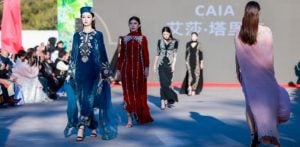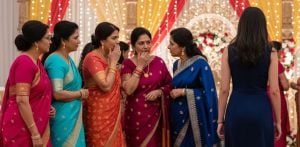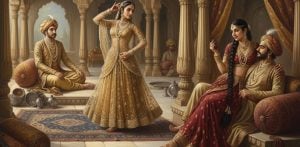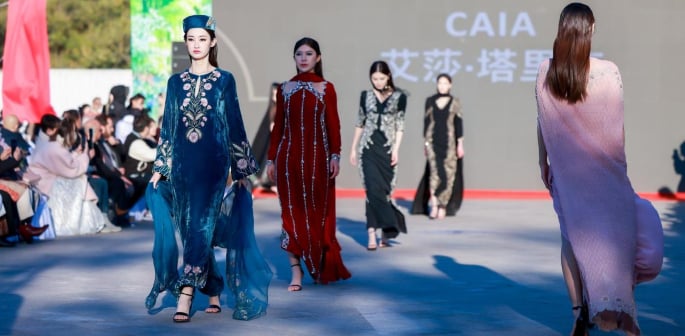Models from both countries walked the ramp.
Pakistan and China joined hands for a landmark fashion show at the Great Wall of China, celebrating culture, creativity and trade potential.
In a historic fusion of culture and couture, Pakistan and China hosted their first joint fashion show at the iconic Badaling section of the iconic landmark in Beijing.
The collaborative event brought together celebrated designers from both nations in a unique showcase of textile heritage and creative exchange.
Curated by Adnan Ansari of Riwayat, the event was organised by the Pakistani embassy in Beijing and the China International Cultural Communication Centre.
A diverse audience of Chinese officials, diplomats, media professionals and business leaders witnessed the visual spectacle unfold beneath the ancient stonework.
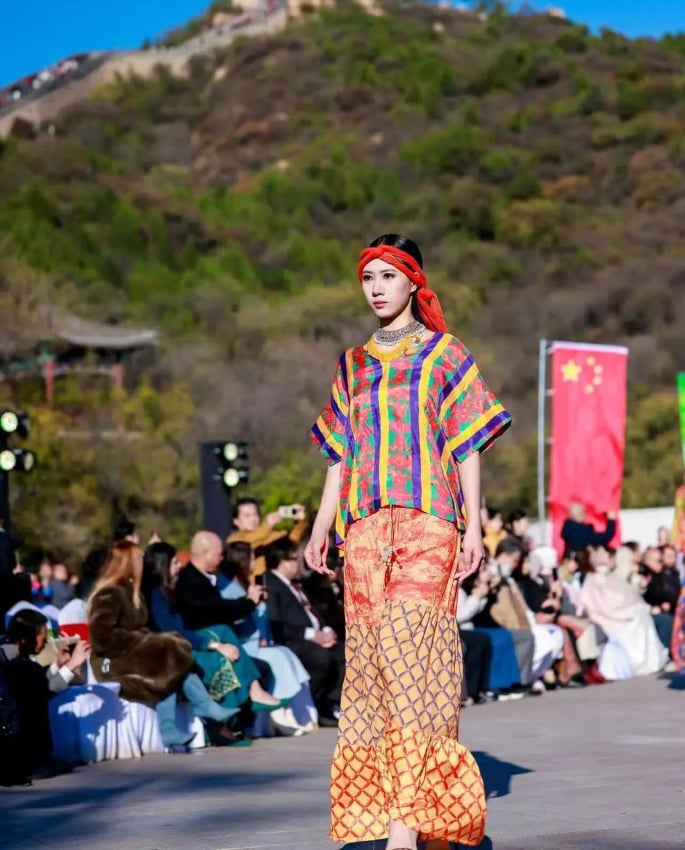
Renowned Pakistani designers Maheen Khan, Moazzam Abbasi, Rizwanullah, Ayesha Tariq and Zain Hashmi presented collections that artfully blended ajrak patterns with delicate florals.
Chinese designer Liang Suyun also showcased his work, alongside jewellery curated by Pakistani entrepreneur Aqeel Chaudhary, who is based in China.
Models from both countries walked the ramp, symbolising unity through design and reflecting a cultural partnership grounded in mutual respect.
Pakistan’s Ambassador to China, Khalil Hashmi, addressed the gathering by drawing parallels between the event and the historic spirit of the Silk Road.
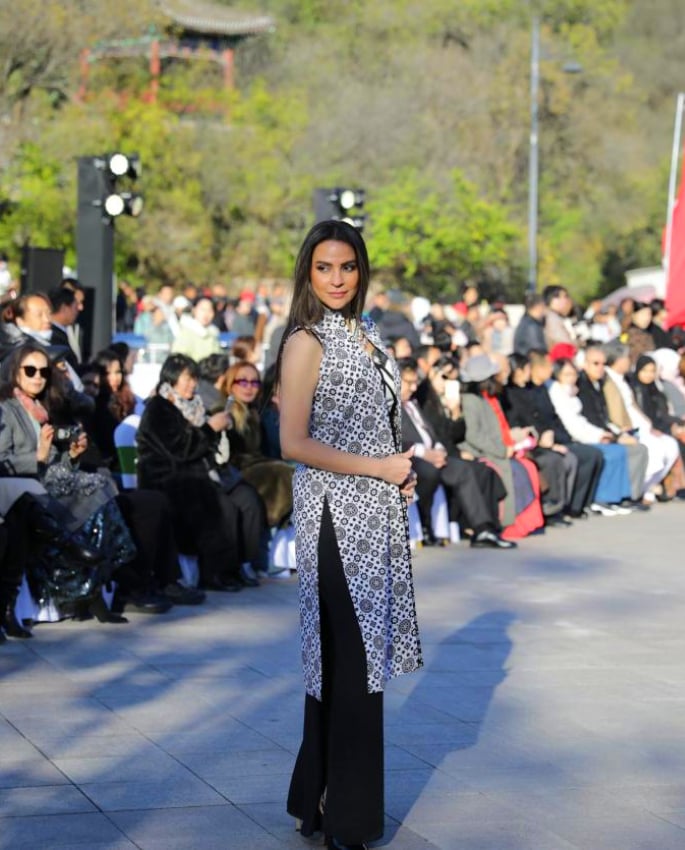
He said the show acted as a fabric bridge of art and friendship, echoing the 60th anniversary of Ayub Khan’s visit to the same location.
Hashmi emphasised the power of fashion to build cultural and economic connections, highlighting its growing appeal in Chinese markets.
He also highlighted that events like these can spark commercial opportunities while enhancing creative collaboration between two historically allied nations.
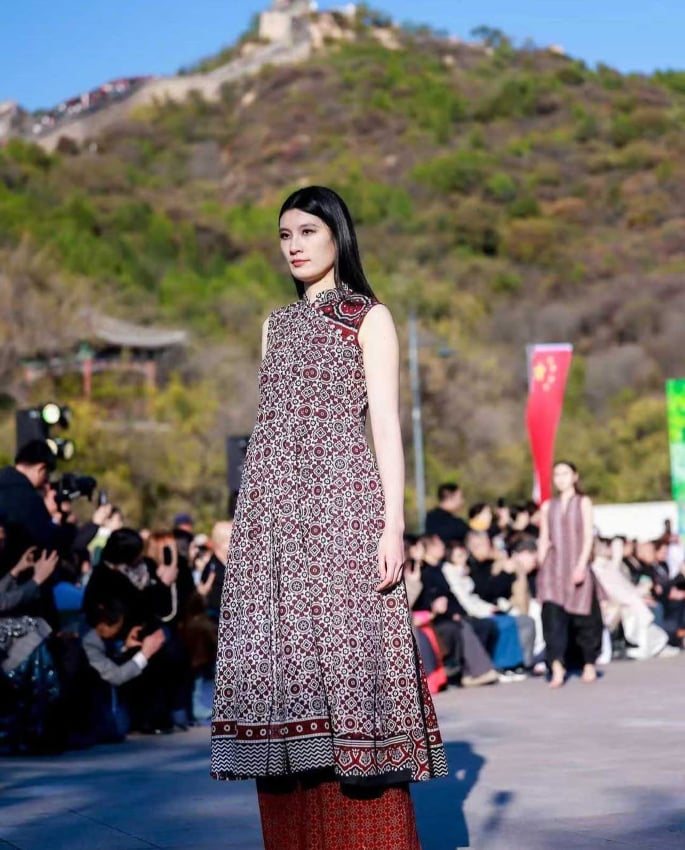
Long Yuxiang, Chairman of CICCC, called the event more than a fashion show, defining it as an expression of the Pakistan-China strategic partnership.
He noted that fashion could be a transformative industry that uplifts lives and connects people beyond politics or policy.
Long reaffirmed China’s willingness to deepen cooperation with the Pakistani creative sector and expand future engagements in fashion.
The collections presented fused modern tailoring with classical motifs from both cultures.
They attracted attention from designers, buyers and fashion media.
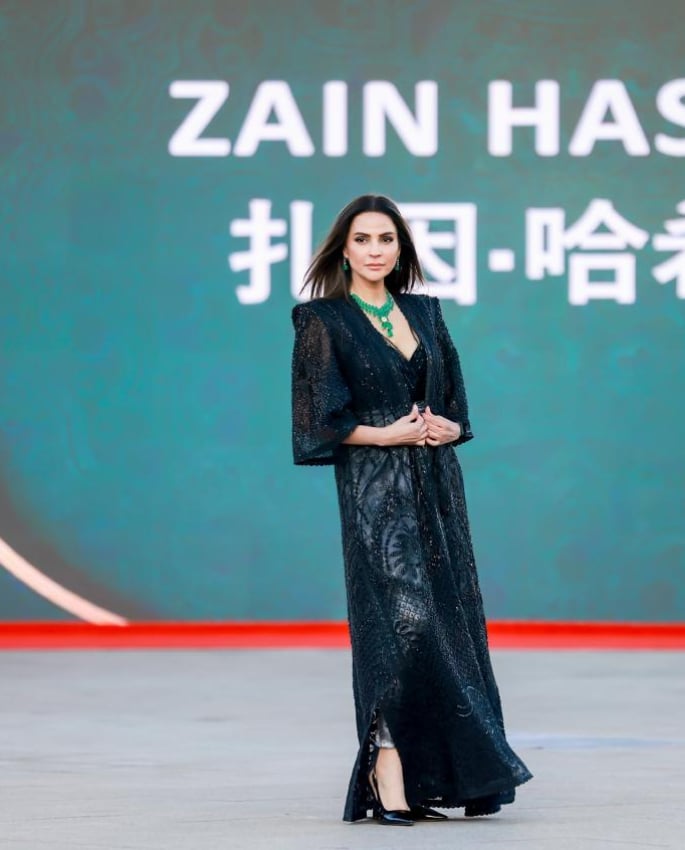
By choosing the Great Wall as its backdrop, the event added symbolic weight to the collaboration.
Designers also viewed the platform as a rare opportunity to present their work to an entirely new audience and begin dialogue for future ventures.

















